Innovative classroom transformations are on the rise! Many teachers are investing their own resources, including time, money and materials, towards creating thoughtful, efficient, and sometimes even magical academic settings for students. Dramatic HGTV-style classroom makeovers tantalize us on social media, whisking away the industrial era of public school interior design and seating us comfortably–finally–in the 21st century. Classrooms everywhere are being transformed into flexible learning environments that inspire, unite, and propel students to attend to self-care, to commit to learning, to collaborate, to improve well-being, and to engage in learning.

Jones Senior High School, a brand new energy-producing 7-12 public school in Trenton, North Carolina, is described by Governor Cooper as the best school in the state. The 50-million-dollar facility is outfitted with probably the most contemporary furniture housed in a secondary school setting.
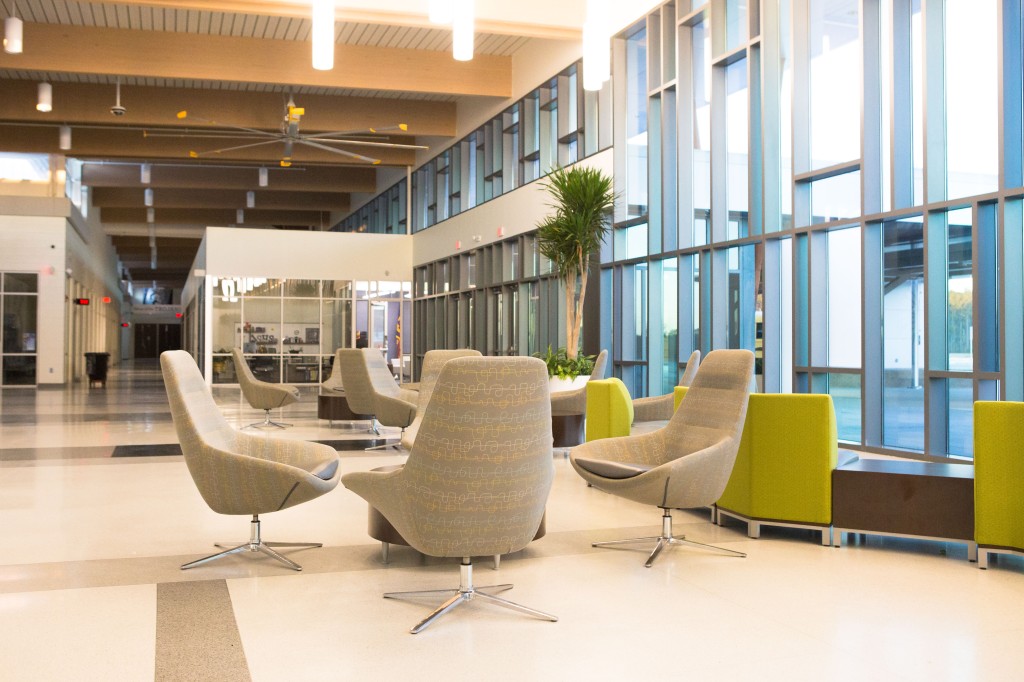
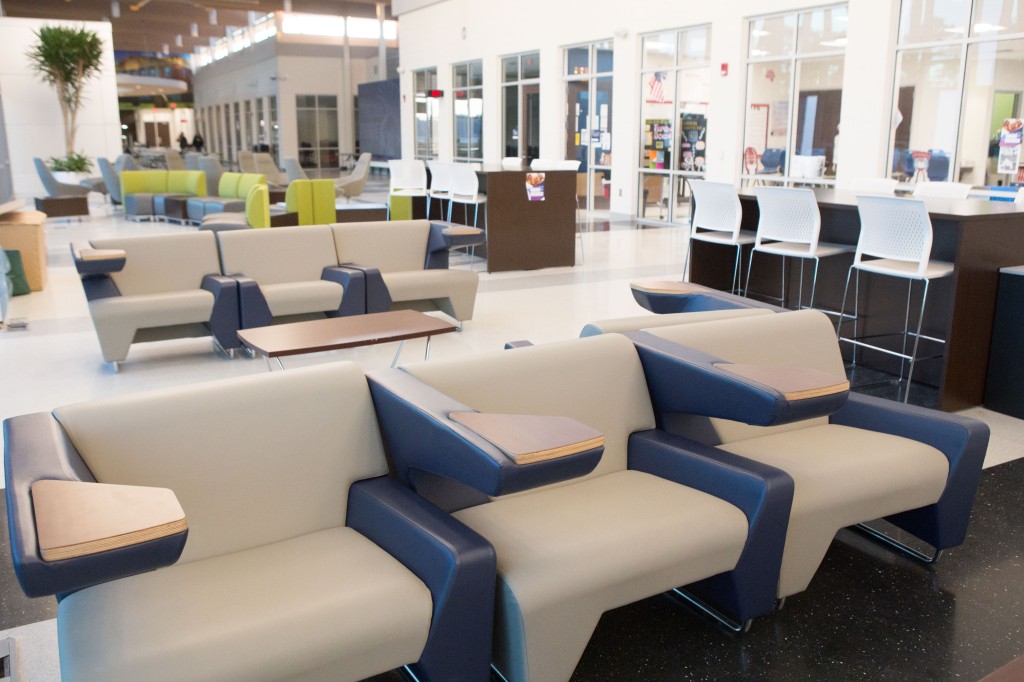

Five Elements of Effectiveness
Considerations for effective use of flexible learning environments, however, include more than aesthetics. Although the research is not exhaustive, we have come to conclude that at least five elements must be included in any classroom, or in this case, in any school, when seeking to implement flexible learning environments. The five elements include choice, commitment to learning, collaboration, well-being, and fun engagement.
So how well does Jones Senior stack up? Using a five-star scale, we rank Jones Senior High School using each of the five elements of effectiveness. Data for this review were collected during three school-wide classroom observations conducted in the fall of 2019. This review is further informed by principal, teacher, student and other relevant voices.
1. Choice
Rating: ⭐️⭐️⭐️⭐️
Parker, Novak, and Bartell (2017) agree, “Giving student real choices in the classroom — having to do with the material they study, the assignments they complete, the peers with whom they work, and so on — can boost their engagement and motivation, allow them to capitalize on their strengths, and enable them to meet their individual learning needs.” Flexible learning environments with flexible seating are most effective when teachers extend students choice about where they work and with whom. Students at Jones Senior indicate teachers do not assign seating, unless necessary, and that they have considerable input in where they work in the learning environment.
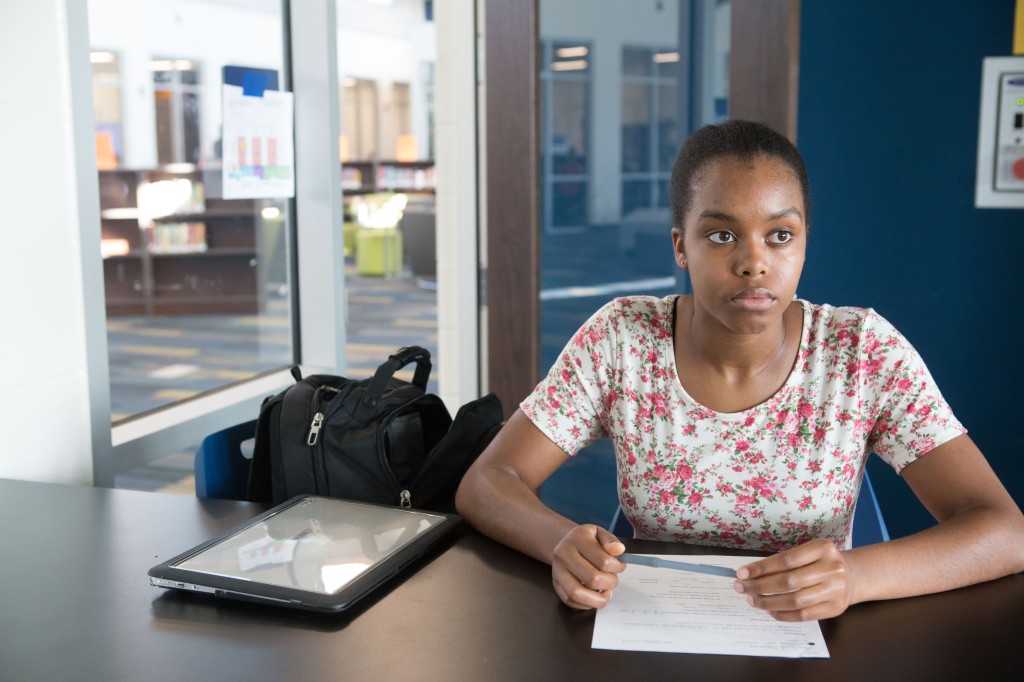
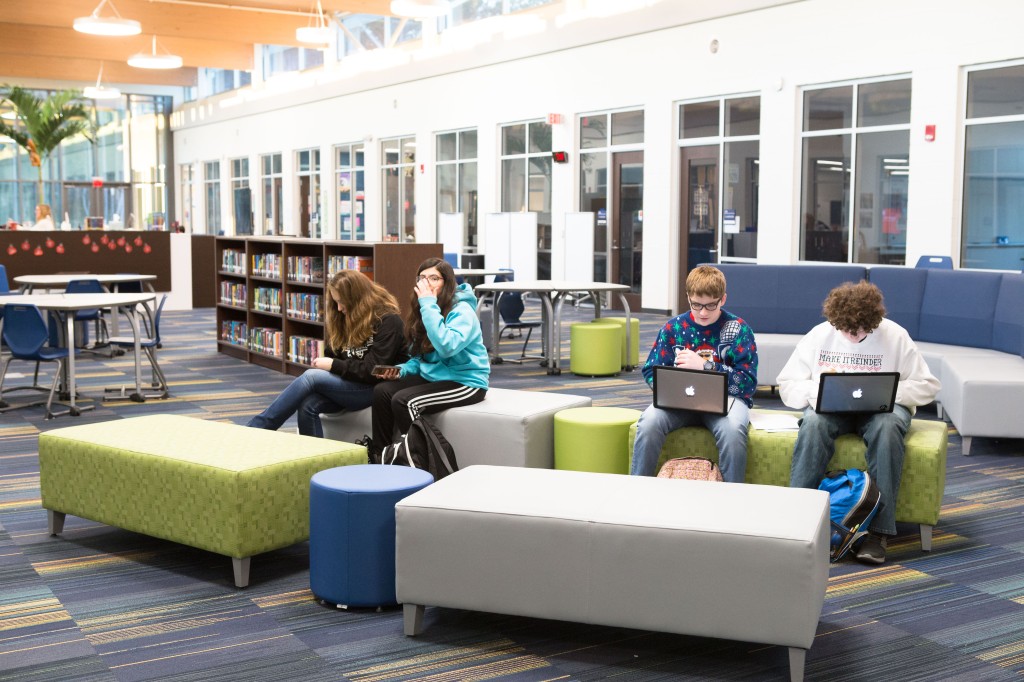
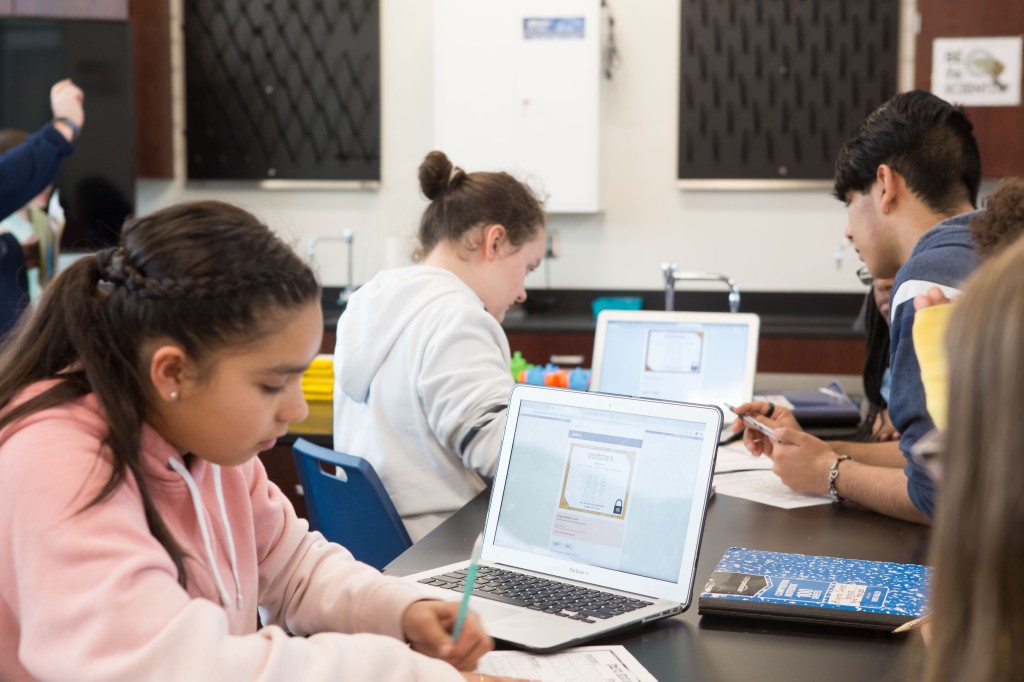
Purposeful teacher-generated choices may be necessary to scaffold the kind of metacognitive behaviors students should adopt for such decision-making. Seating choice based on class size, overcrowding, and other random accommodations do not yield the same benefits as purposeful choices based on task intentions, volume requirements, physical movement, social construction, and students’ learning preferences and/or needs.
When students are encouraged to make thoughtful decisions about the most optimal seating preferences to meet their own learning needs and/or to control their own social behaviors, they develop metacognitive skills that facilitate self-regulation long after high school. Metacognitive knowledge, or knowing oneself well enough to problem-solve for one’s own specific needs, is the highest form of knowledge and absolutely essential for academic self-care.
Metacognitive prowess is not the only superpower resulting from student choice. The choice to change seating, including seating type and location, can have both a positive and significant impact on students’ mental states, causing positive internal shifts. Changes in location can influence student attention, engagement, and performance, while eliminating distractions. Moreover, such decision-making fosters student ownership and advances cognition about choices and consequences that normally does not fully develop until well into students’ 20s.
2. Commitment to Learning
Rating: ⭐️⭐️⭐️⭐️
Commitment to flexible learning environments must also embody a commitment to using such facilities creatively to maximize learning. Flexible learning environments should offer inviting opportunities for students to commit to positive and proactive academic and social behaviors.
The flexible design of the JSHS illustrates its commitment to learning.
“The school is designed to promote collaborative learning that extends beyond the four walls of the classroom.”
Lorin Grimmett, Media Specialist
Taking center stage on each of the school’s dual wings, the two media centers act as central hubs of teaching and learning. Housing at least $47,000.00 in new texts between them, these resource-rich centers are readily accessible to staff and students as each is no more than a paper airplane’s throw from the average classroom door. According to Grimmett, the open shared workspace readily exemplifies the ideal setting for a media center. Grimmett attributes increases in individual student readership largely to the media centers’ targeted proximity to students’ social and academic life.


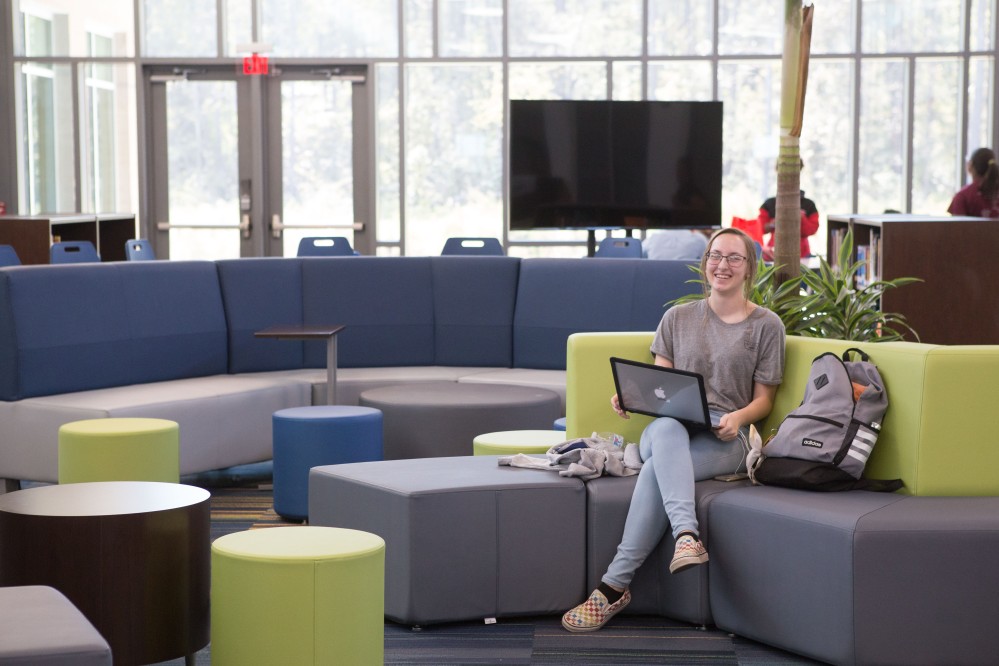
Grimmett is not speaking figuratively when she indicates the school is designed purposely to extend learning beyond the four walls of the classroom. Literally, classrooms only have two full concrete walls. The other “walls” are glass. You can see the media center, its resources, and the rest of the school’s living, breathing, and moving world right outside any classroom window.
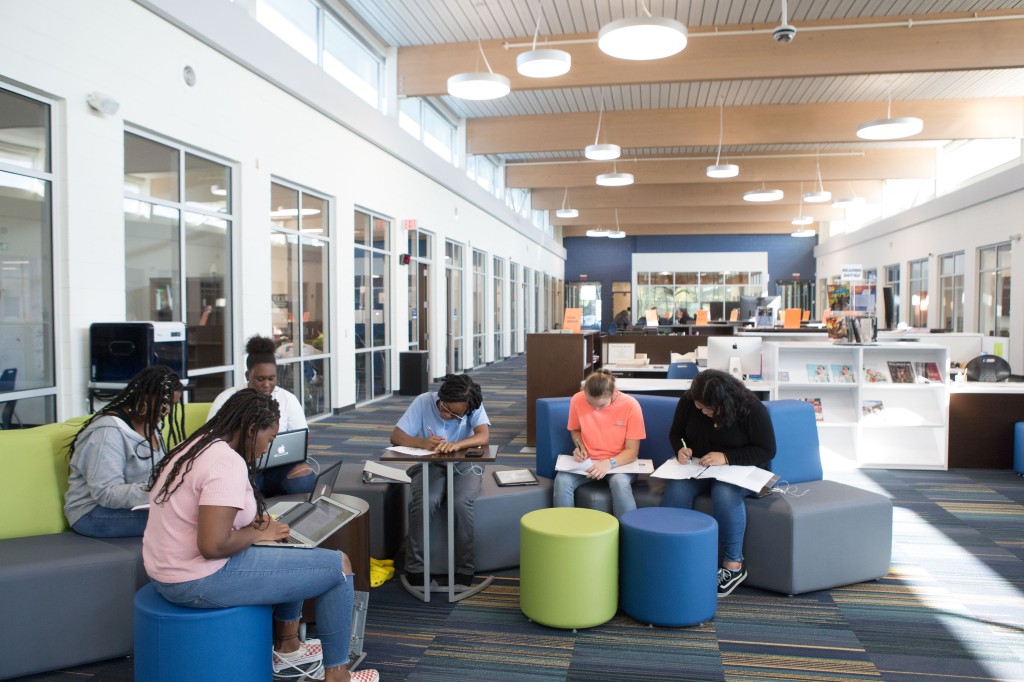
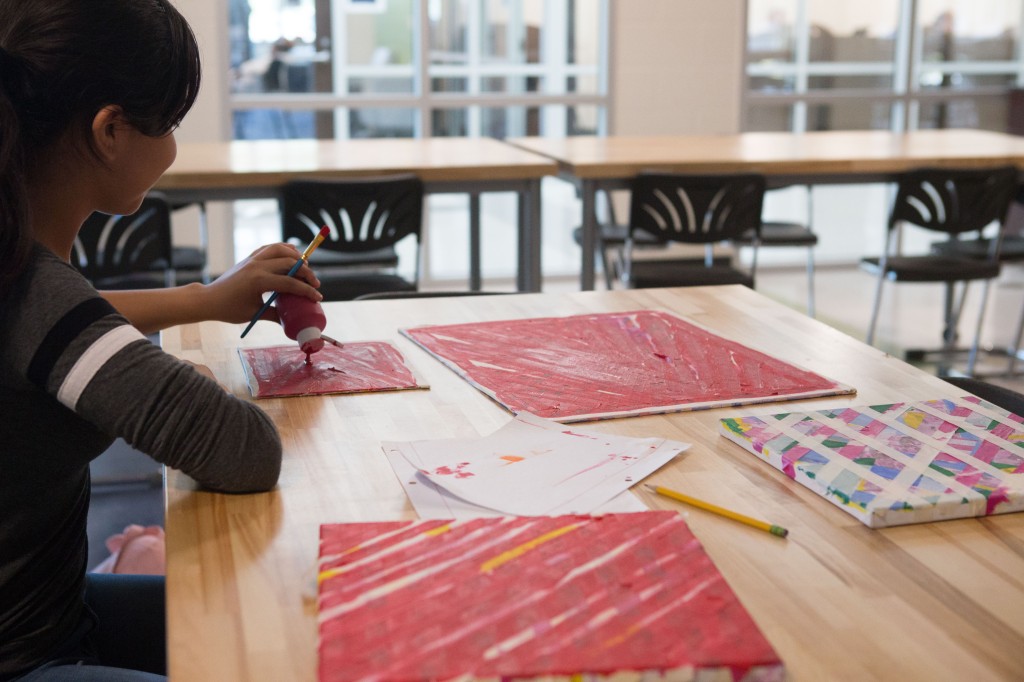
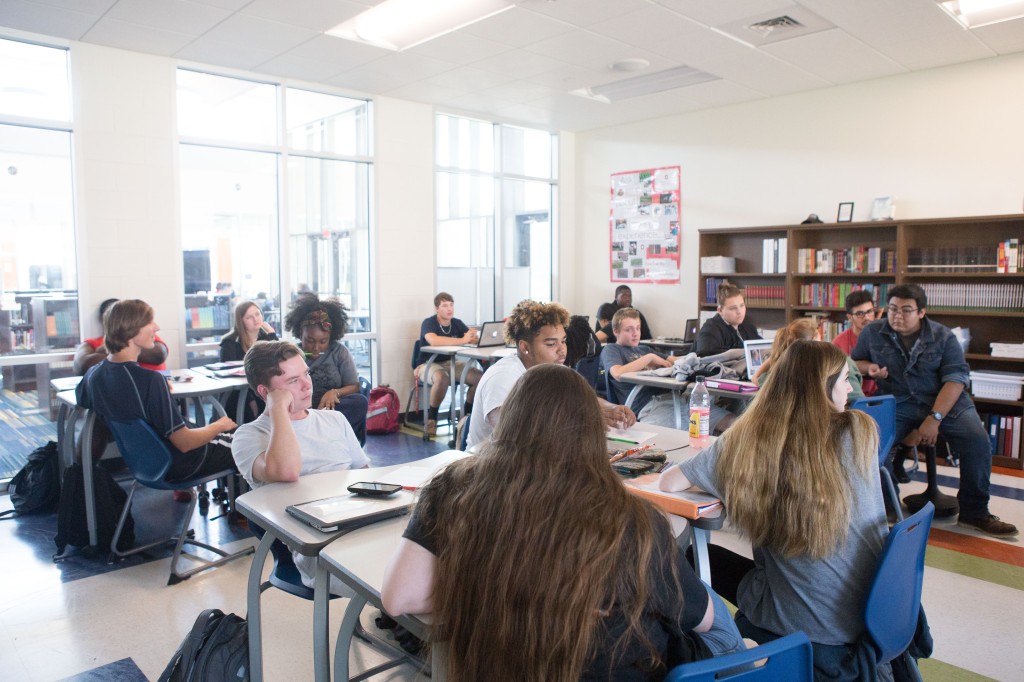
Many teachers and students alike describe the infinite transparency of their new school akin to teaching and learning “in a fishbowl,” “being exposed,” and “always on display.” Clearly, there is a love-hate relationship with all that glass. Although student distractions are easily minimized by high student engagement, for some the novelty of no walls never wears off. For students (and teachers) who are easily distracted, resisting the temptation to wave at friends (or colleagues) or gawk at passersby can be battles hard fought in this small, tight-knit community. In all cases observed, however, students (and teachers) occupying any space in the school at any given time appeared highly engaged with deliberate attentiveness to the tasks in front of them.
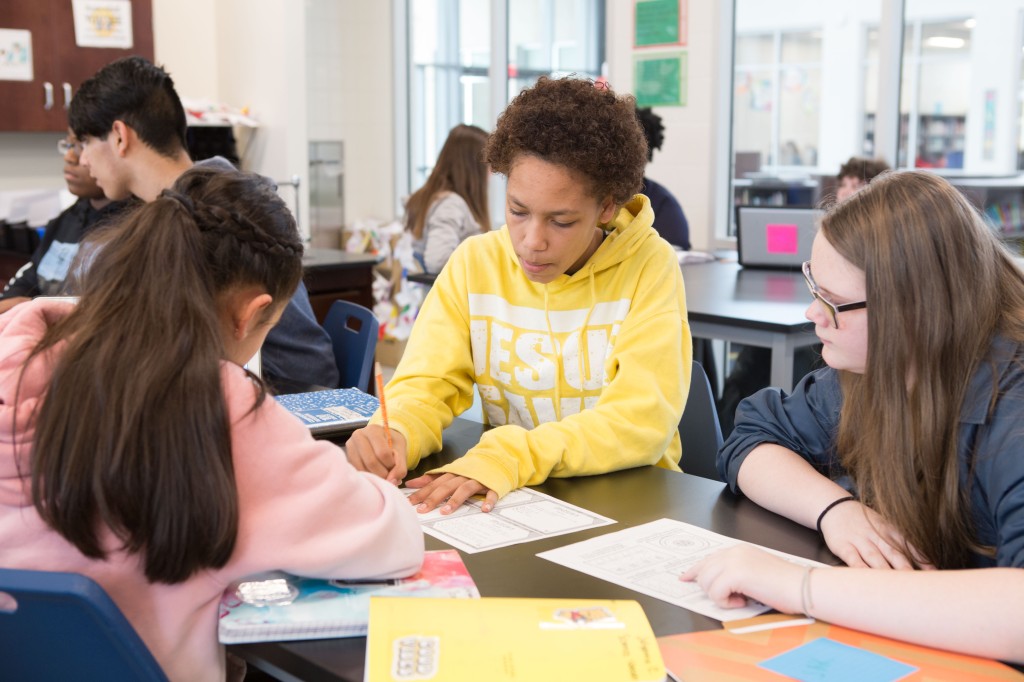
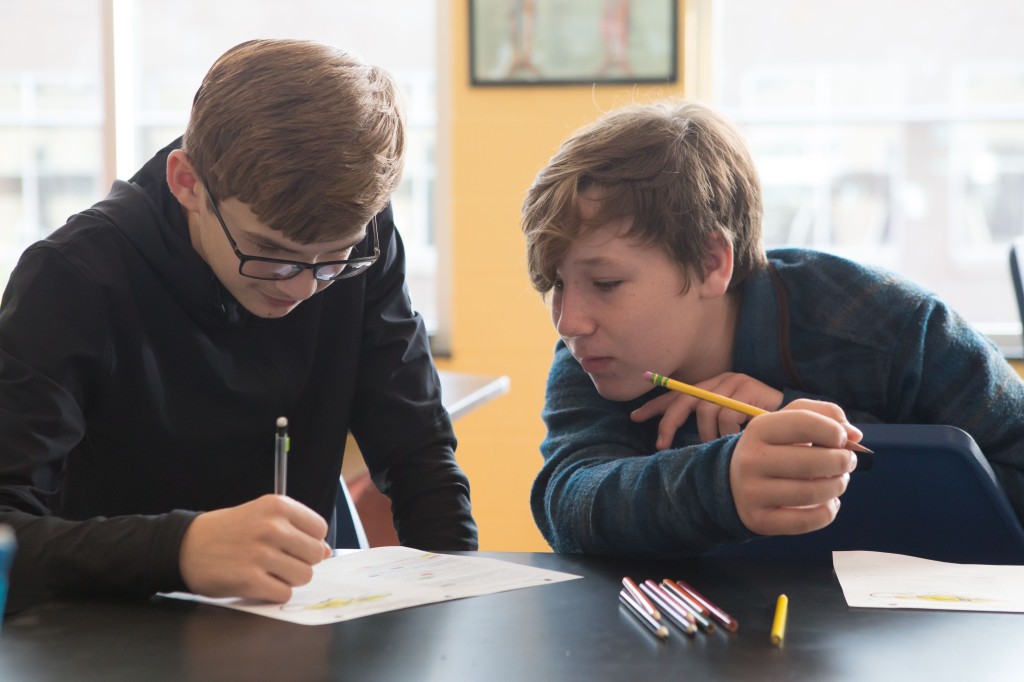
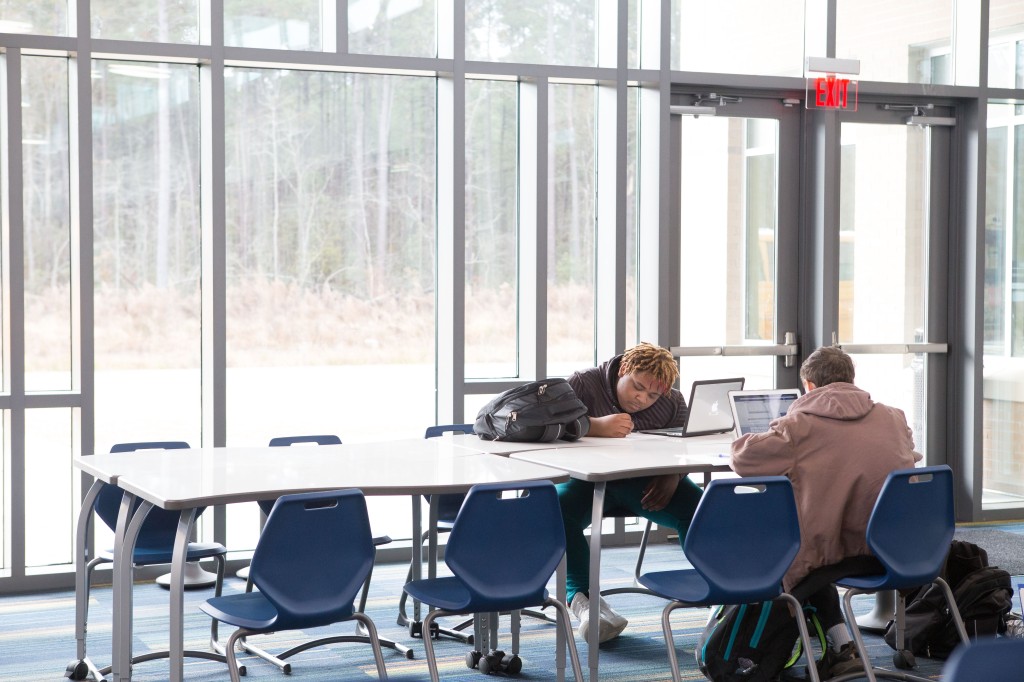
For exceptional children’s teacher Angela Howard, the glass walls are beneficial, providing students with quick, visible access to instructional support with no more than a wink, if necessary, to signal the need. Hines and Mair agree the glass walls make monitoring instruction a translucent and constant process for everyone–including administrators, teachers, students, community, and other relevant stakeholders.
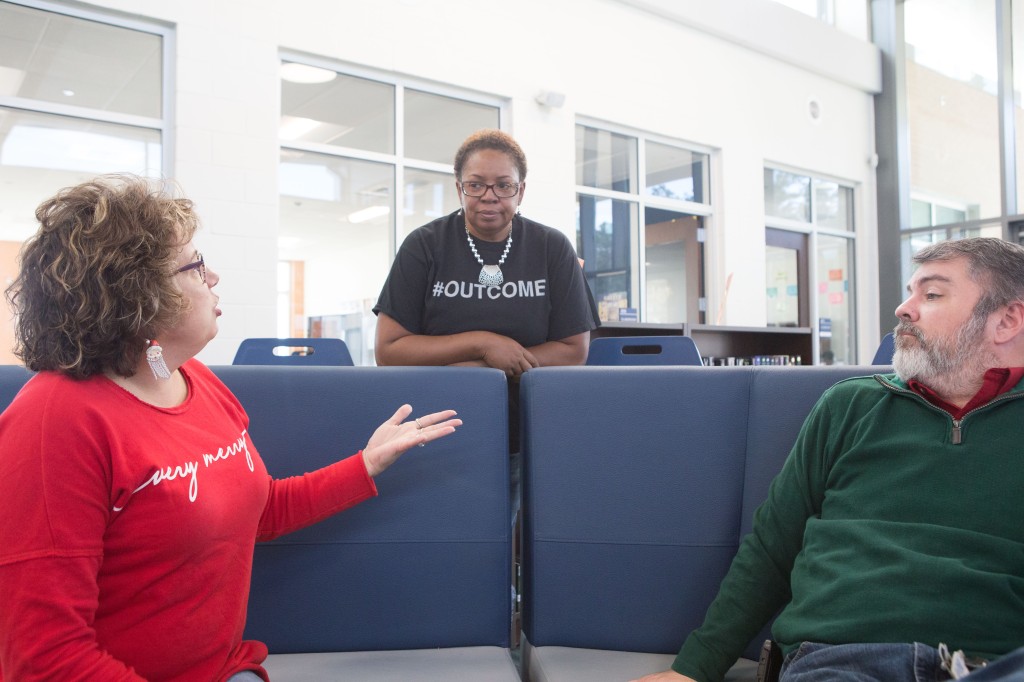


Although everyone looks great in natural light, some say the glass is far more form than function, citing simple sun glare as a significant setback. No matter where you are in the building, there will come a moment in the day when the sun casts her rays and those invincible beams wash out screens, boards, and faces. Without blinds or shades as viable defenses, there is no defeating or escaping her glare.
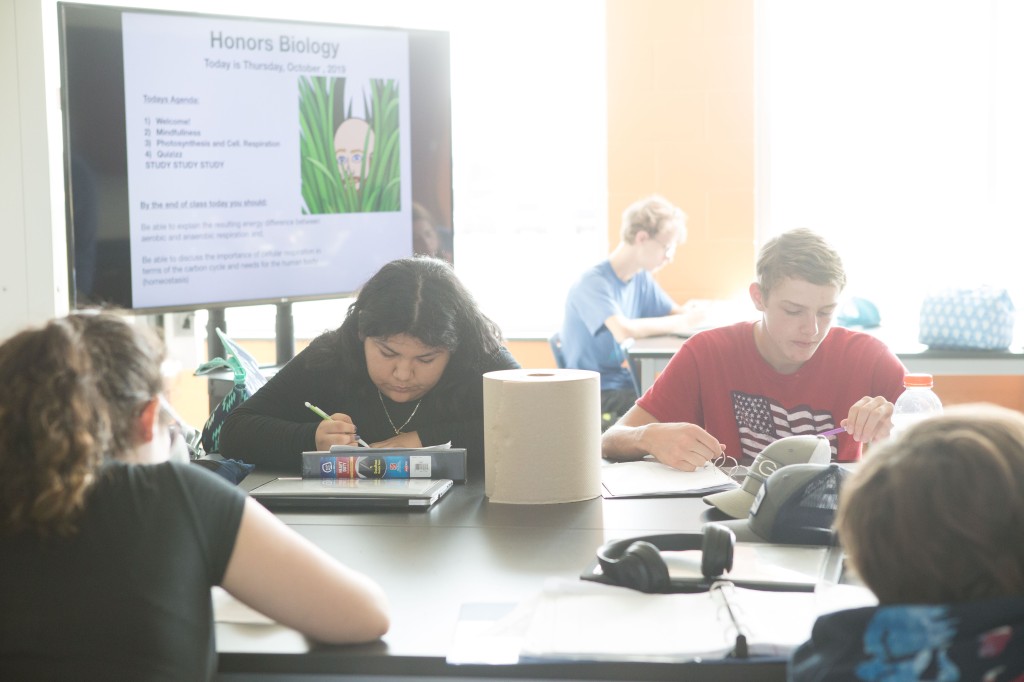

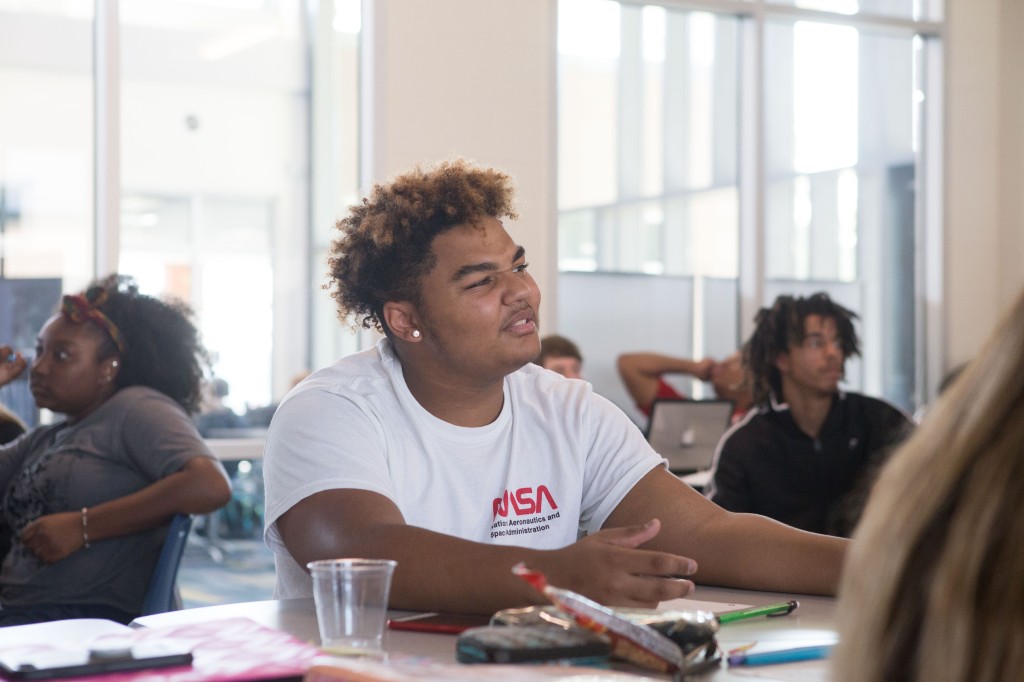
3. Collaboration
Rating: ⭐️⭐️⭐️⭐️⭐️
Outfitted by large communal spaces and by ample and sundry seating, the school itself is staged and optimized for generalized, widespread collaboration of every kind, including informal social interactions, team planning, study groups, project-based learning, presentation preparation, professional learning communities, and countless others possibilities not yet imagined.
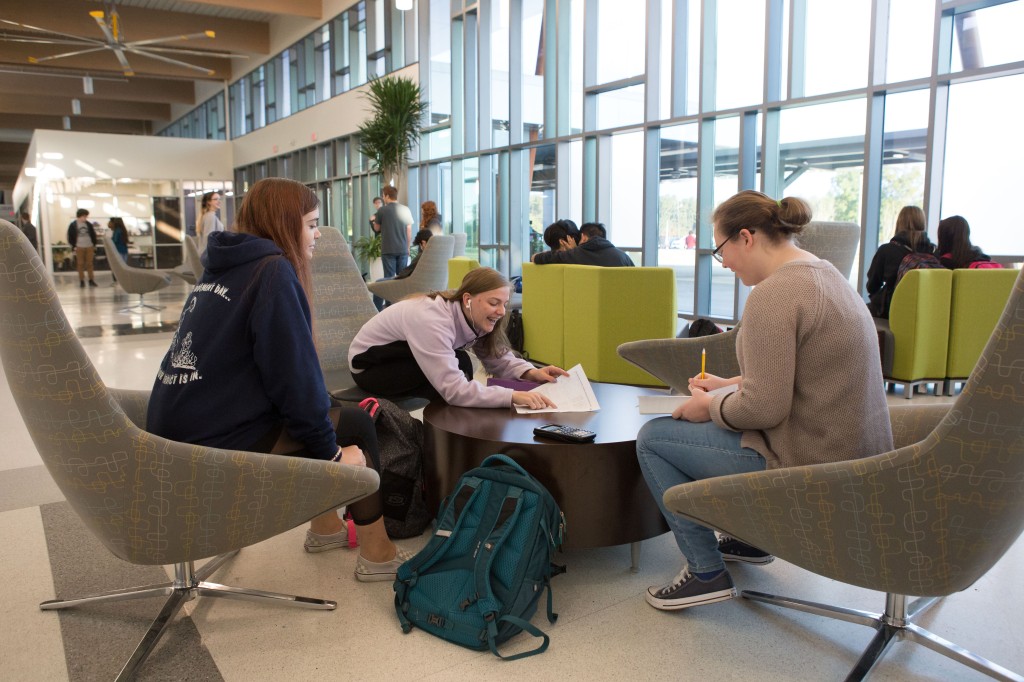
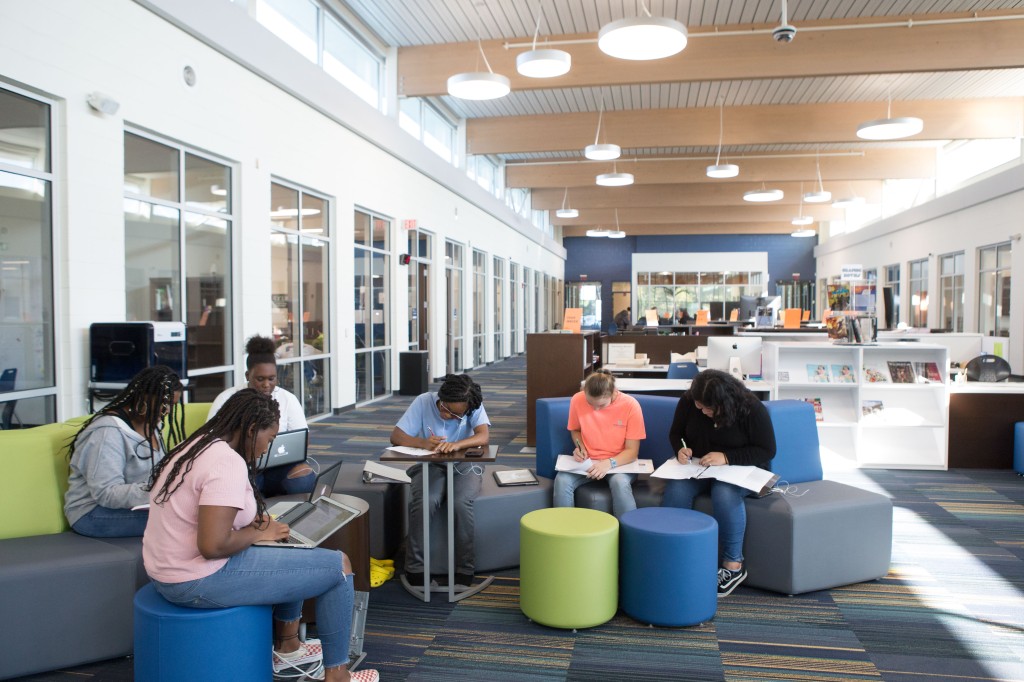
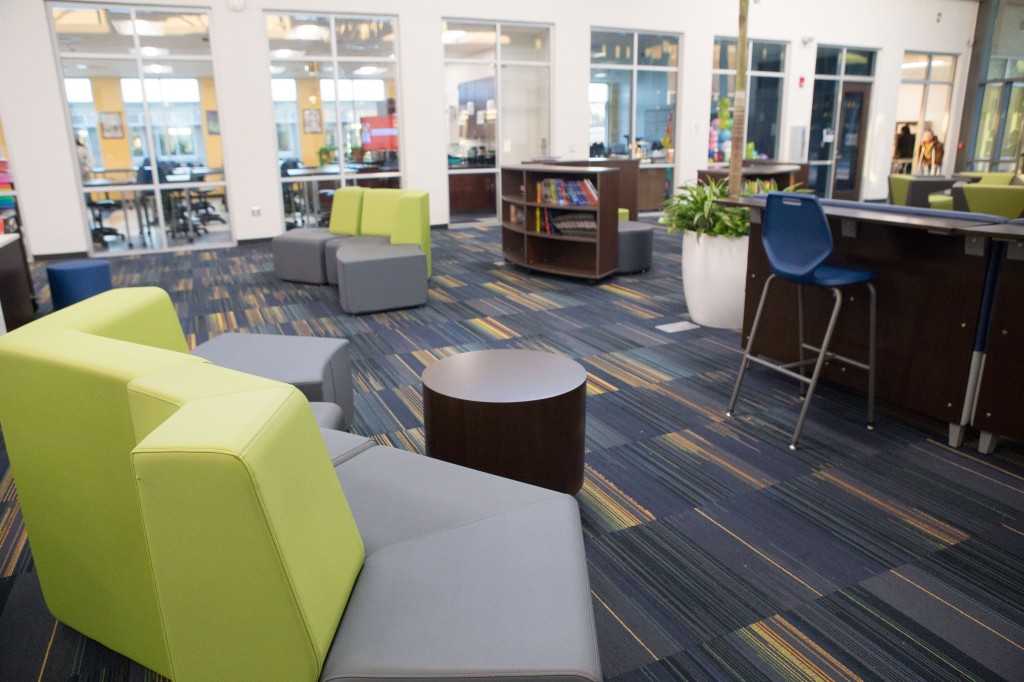
Teachers use common areas as extensions of their own classrooms. For example, seventh grade science teacher Peyton Jenkins uses flexible learning to facilitate small group instruction and learning centers. Coaching and cueing some groups and direct teaching others, Jenkins can simultaneously monitor the group watching a video at a cluster of tables right outside the classroom. No longer is there any need for teachers to have eyes in the back of their heads: through walls of invisibility, they can monitor student progress inside and outside the classroom. Increases in integrated, cooperative, and project-based instructional approaches are positive organic outcomes of the school’s design.
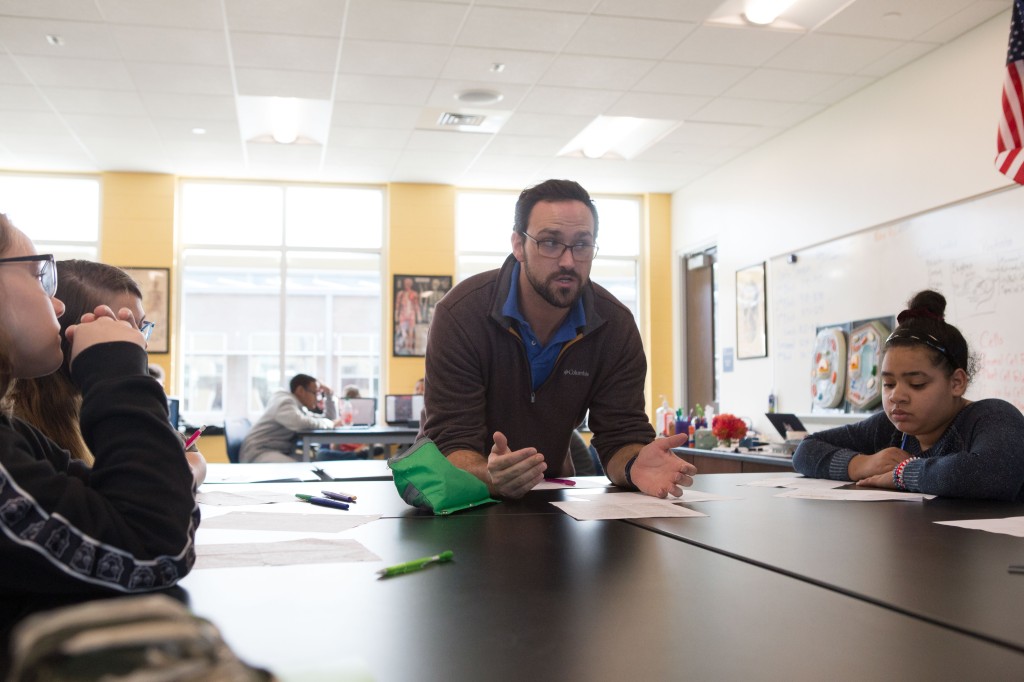
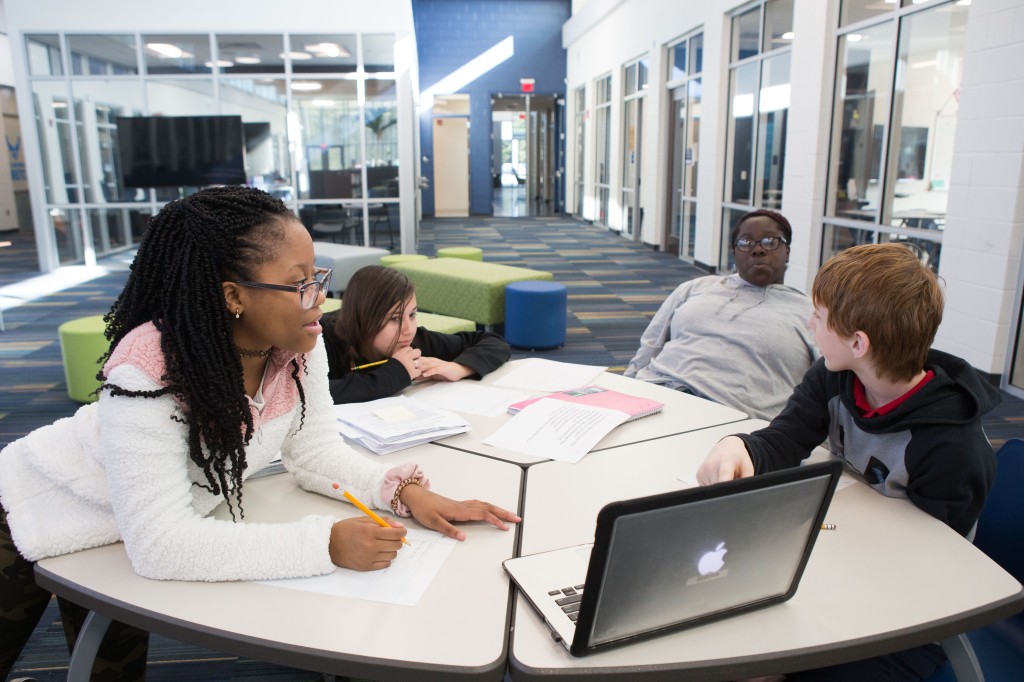
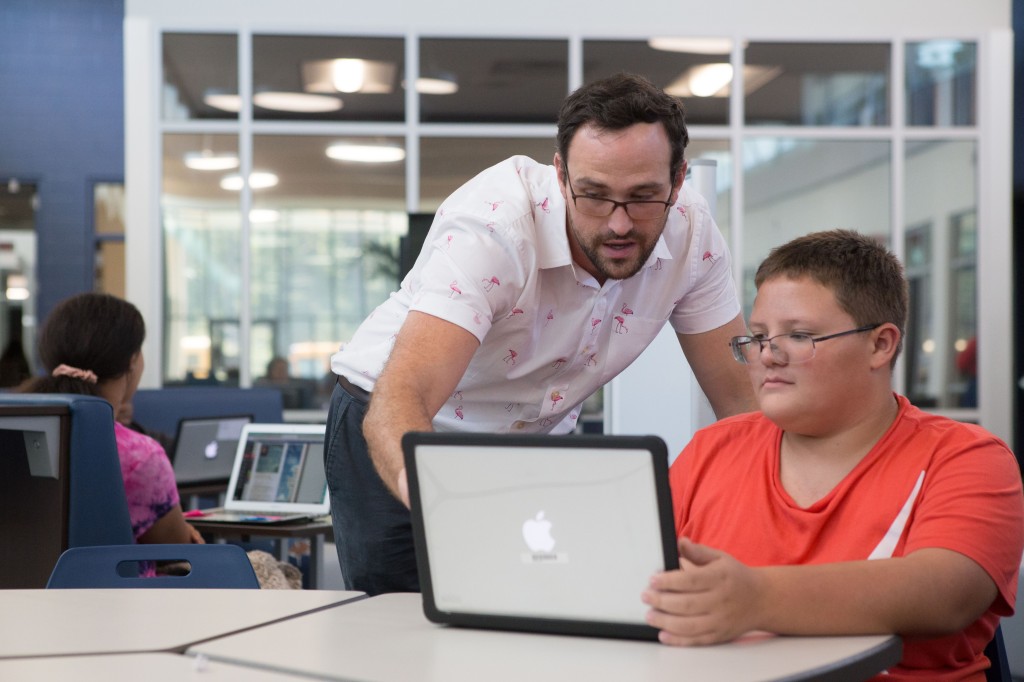
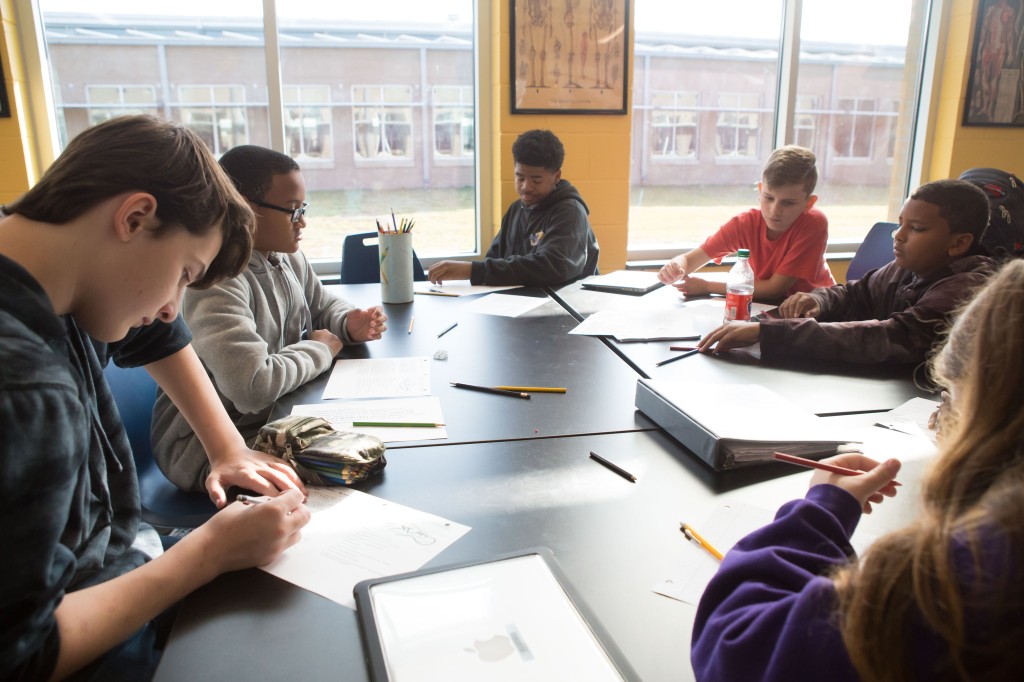
Isolated for years by the design of their previous school, teachers now find the increased visibility and close proximity of colleagues worth any costs in professional disclosure posed by glass walls. In fact, teachers say despite any initial fears of “being on display,” they feel more supported now than ever, knowing colleagues and school leaders across the way can see, react, or respond, if necessary. In addition to collegial security, professional collaboration has increased exponentially and occurs more frequently and spontaneously as a result of shared workspaces. Teachers are authentically building professional capital by means of proximity.
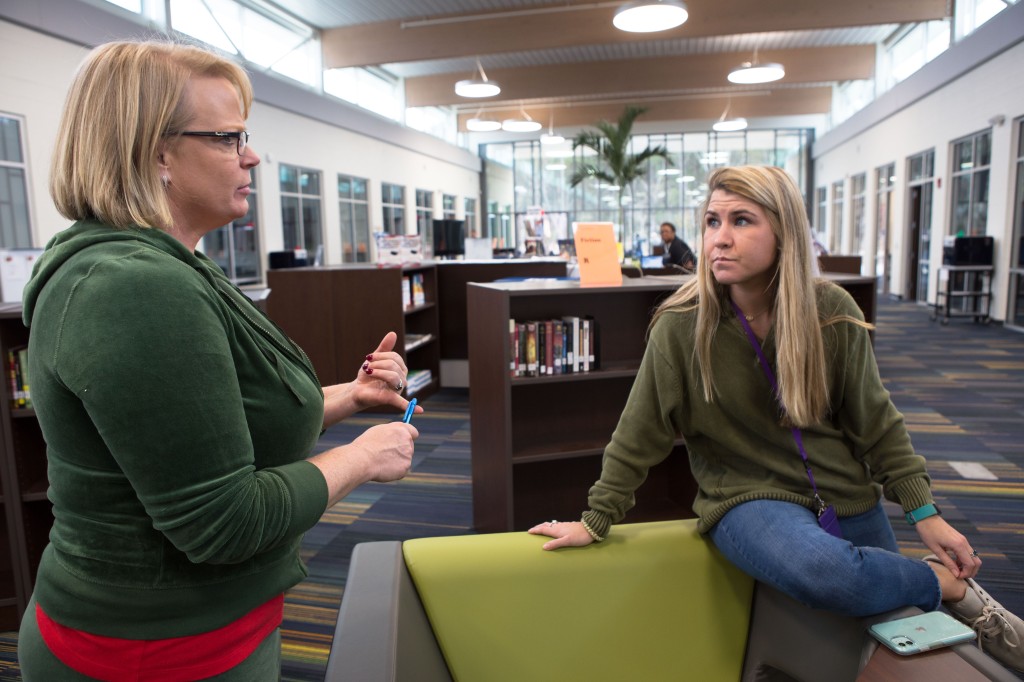

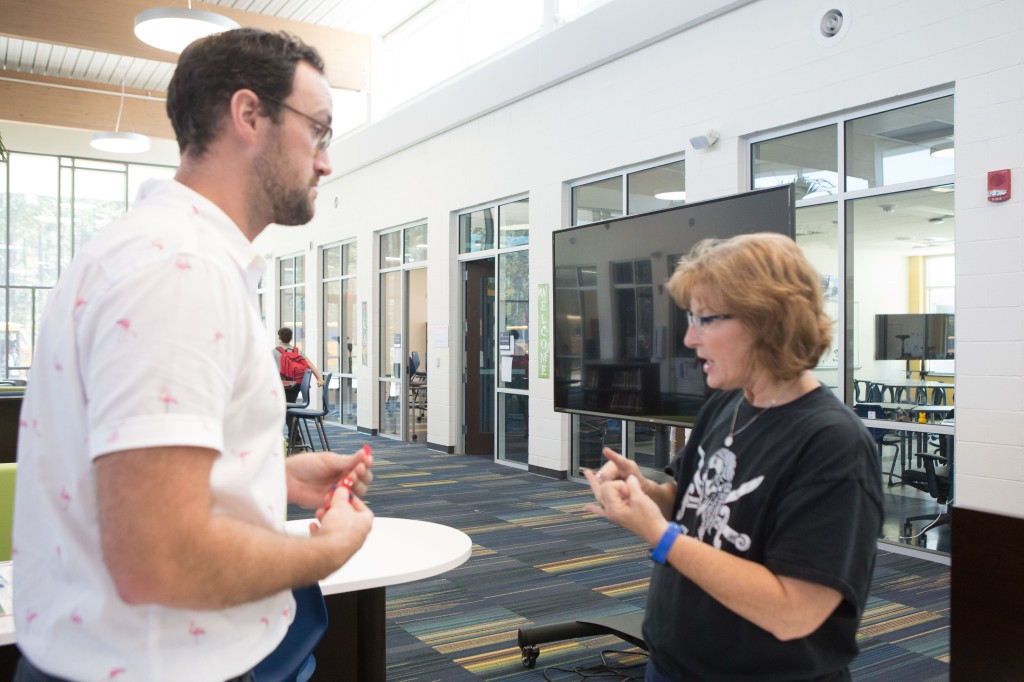

Pictured Left to Right: Kayse Lavin (English), Caroline Kittrell (Social Studies), Tyosha Bryant (Math), Thomas Ebert (Math), Lisa Kinsey (English) + a baby future Trojan
4. Well-Being
Rating: ⭐️⭐️
Flexible learning environments should accommodate students’ need for physical movement. Students need flexible opportunities to wobble, rock, bounce, lean, walk, and stand. Bodily movement increases oxygen to the brain, regulates blood flow, and improves alertness and focus. Deliberate attention to sensory input is also a critical component of well-being in flexible learning environments. All learning environments should seek to simultaneously stimulate and soothe students’ senses–tactics which can help with ADHD, ADD, and other attention deficit disorders. Ultimately, flexible learning environments should positively influence students’ physical, mental, emotional, behavioral, social, and academic well-being.
Flexible learning environments should not only easily permit student movement, they should also result in increased teacher proximity and mobility. Moreover, such settings should promote well-being through safe and orderly environments, free of obstructions.
Unfortunately, in many flexible learning settings students have no true “home base” in the form of lockers or assigned desks for storage. Students at JSHS are long-familiar with this university-style setting where open workspaces are shared without ownership and, typically, without lockers. Students carry belongings virtually everywhere with no designated place to store personal academic materials or supplies. Without sufficient student storage or designated housing, classroom floors easily become dangerous dumping grounds in which teachers and/or students can find themselves tripped or trapped in a tangle of book bag straps, slip-sliding notebooks, trampled coat sleeves, or a curl of charging cables, etc. One report of teacher injury due to these conditions makes revisiting adequate storage options a strong recommendation for flexible learning environments.
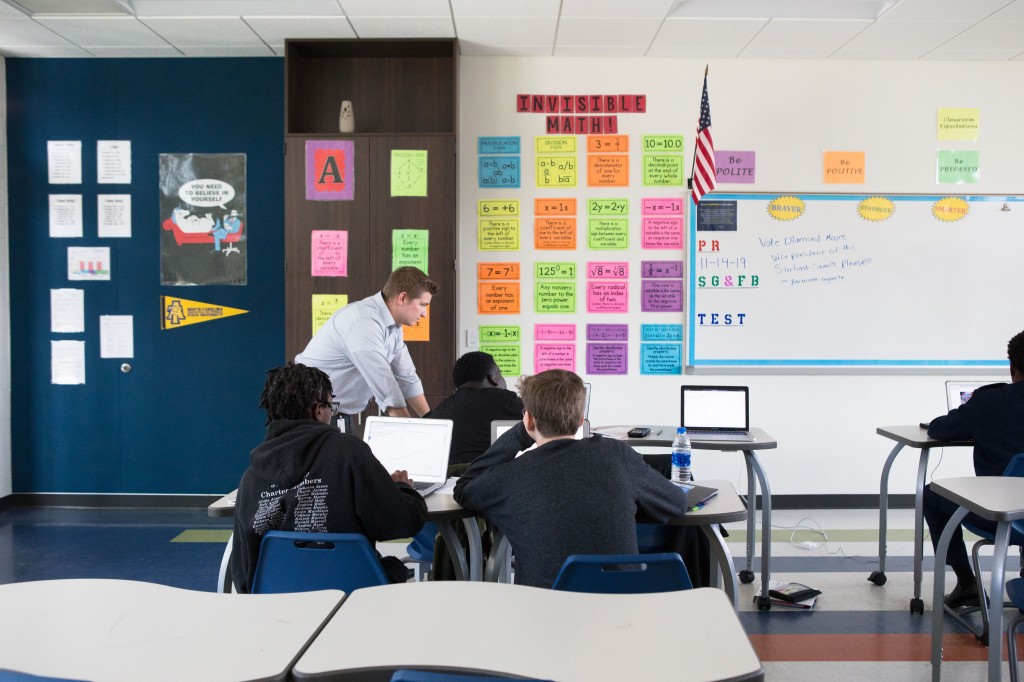


Although the school’s sustaining 1:1 technology initiative should reduce the bulk and weight of the physical materials students may need to carry with them on a daily basis, the scarcity of electrical outlets throughout the school, and particularly in common areas and classrooms, short-circuit the connectivity 21st century learners require to thrive digitally in the state’s most technologically-advanced and energy-efficient school.
5. Fun Engagement
Rating: ⭐️⭐️⭐️⭐️
Flexible learning environments allow for easy transitions in the classroom. Furniture options resting on castors expedite quick pairing and grouping options with minimal time, effort, or energy. Furniture can be re-arranged with ease in several configurations to accommodate both students’ physical and academic needs; conduct specific learning tasks; facilitate Socratic and other paideia-type instructional approaches; and simulate real world contexts and conditions. Physical shifts in the learning environment help students understand learning intentions, engage more readily, and meet outcomes.
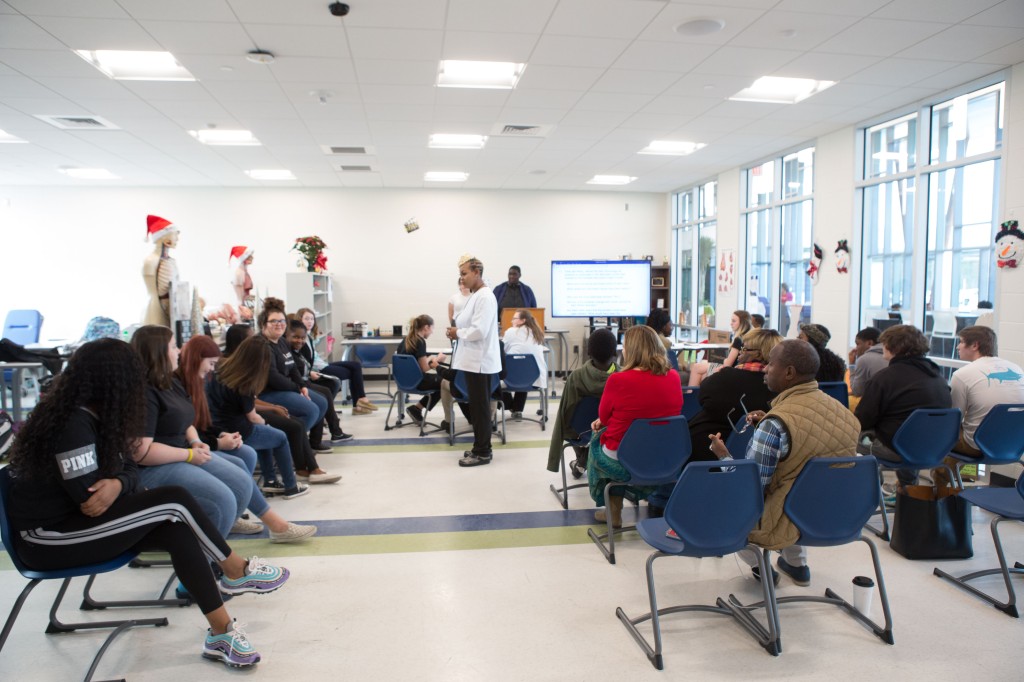

Pictured above are the healthcare professionals (defendants) and their defense attorney.
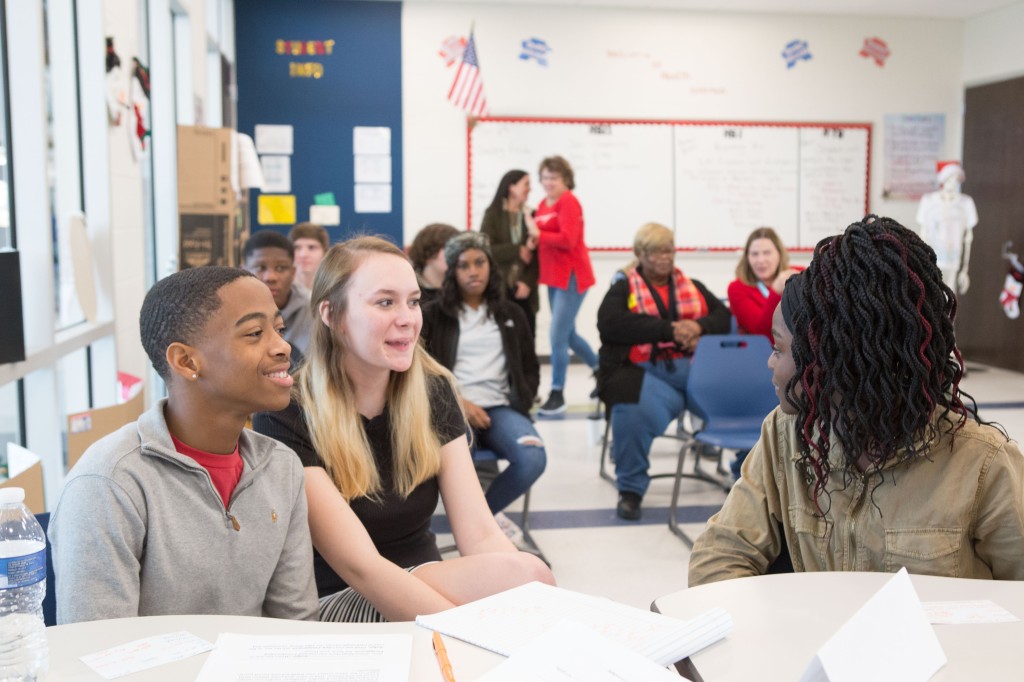
Flexible learning spaces should offer fun, student-centered learning opportunities that generate meaningful social engagement. Vygotskian approaches to teaching and learning value social construction and embed sufficient time for students to make purposeful connections with peers. JSHS teachers’ instructional decisions demonstrate that they understand adolescents form deeper opinions of themselves, the content, and the world around them. Teachers are structuring learning opportunities that require more interdependence, cooperation, and collaboration than ever observed before. For example, Caroline Kittrell is known by colleagues and loved by students for her project-based approaches to social studies. Her students say they prefer using the flexible learning spaces throughout the school to work on projects together and need more opportunities to do so.
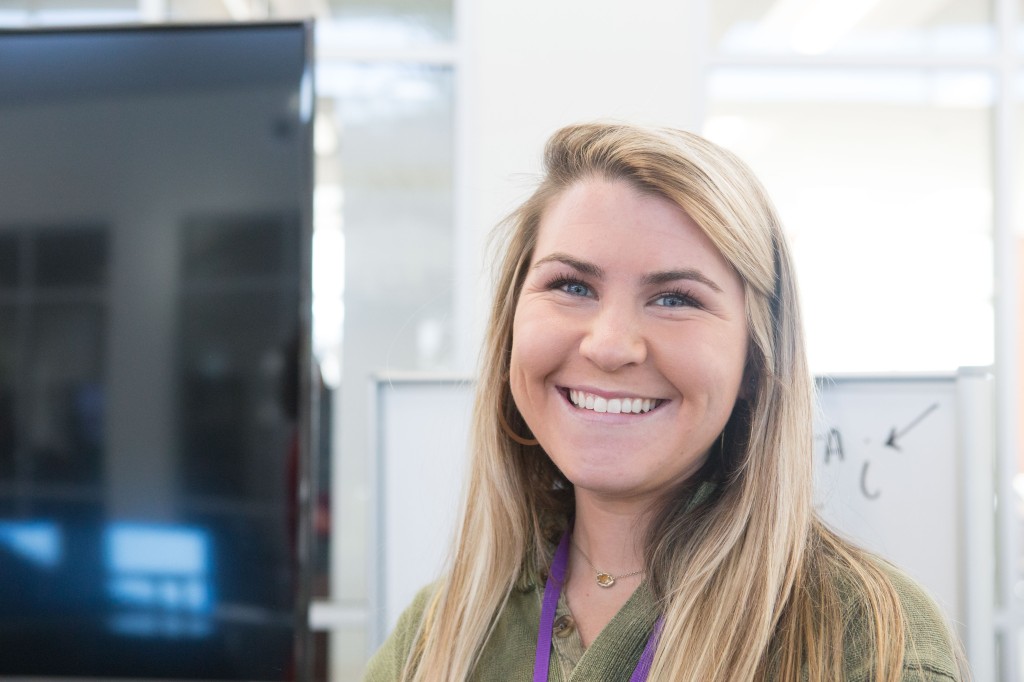
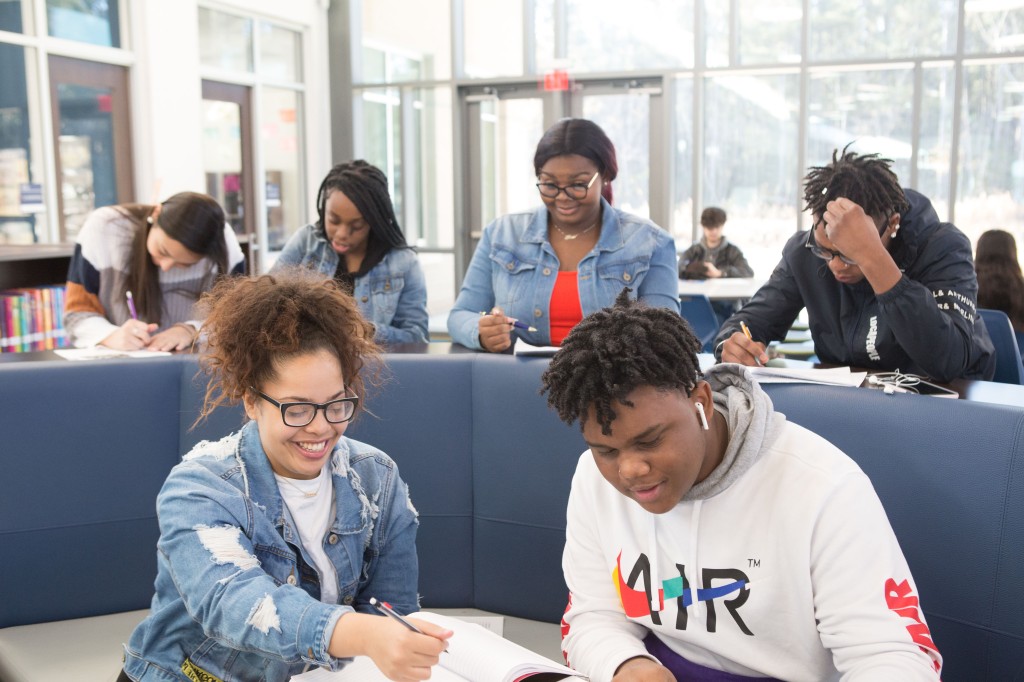
Top Right: Anna Fair; Jala Dennis; Kenayah Simmons; Denaino Smith
Bottom Row: Marissa Smith and Tocharian Dean
For some teachers, the flexible learning environment influences more collaborative instructional approaches; for others, it beautifully accommodates existing practice. Never has a visit to Tammy Wicks’ class, in the old or new building, resulted in a dry, throat-scratching scientific lecture. No! Students are always actively engaged in a variety of fun and rigorous tasks that require them to put their hands on the learning and rely on each other to solve problems. Breaking out of escape rooms and designing wind-powered cars, students use the copious black slab tables in her large science lab to prep for the race–apologies–for the experiment! Limited to materials provided and each other, Wicks’ students engaged in the kind of collaborative tasks that strengthen learning communities, foster independent competence, and deepen conceptual understandings about content.
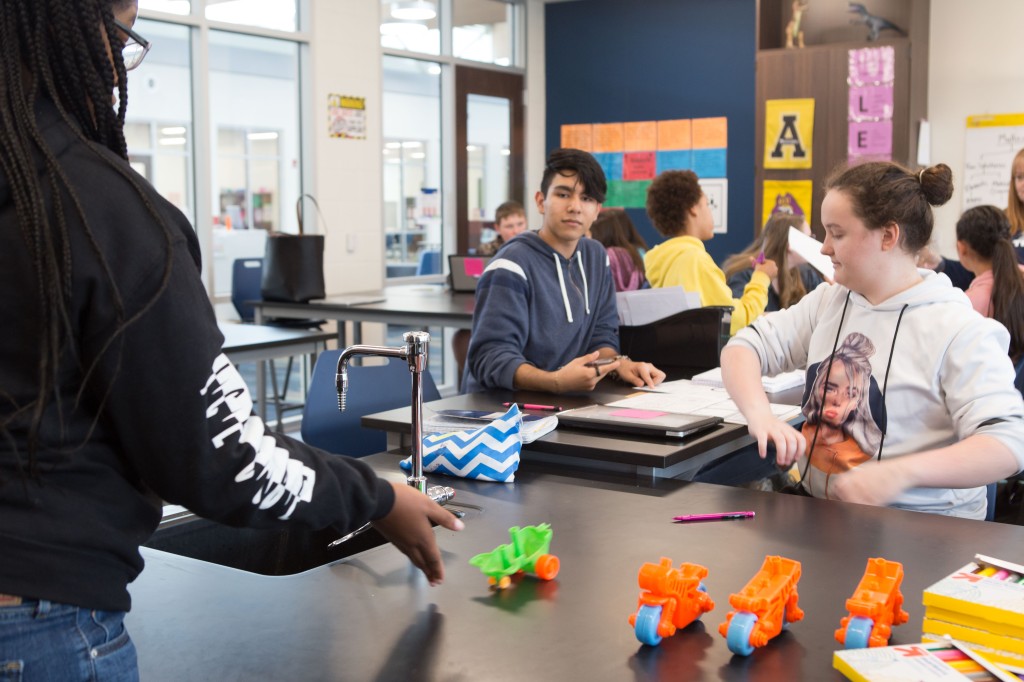
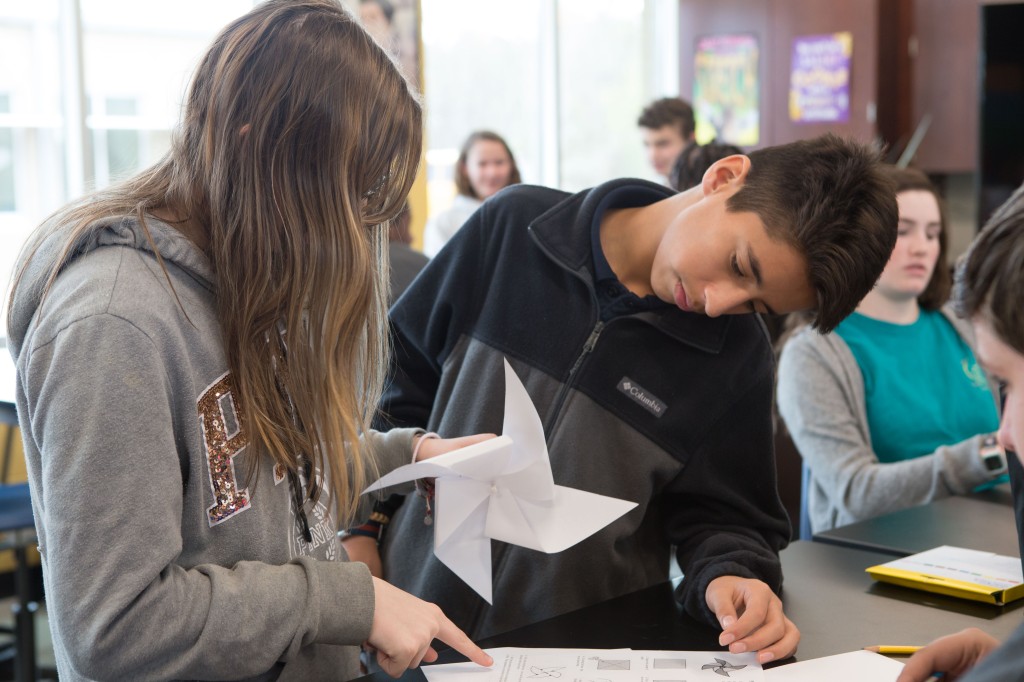

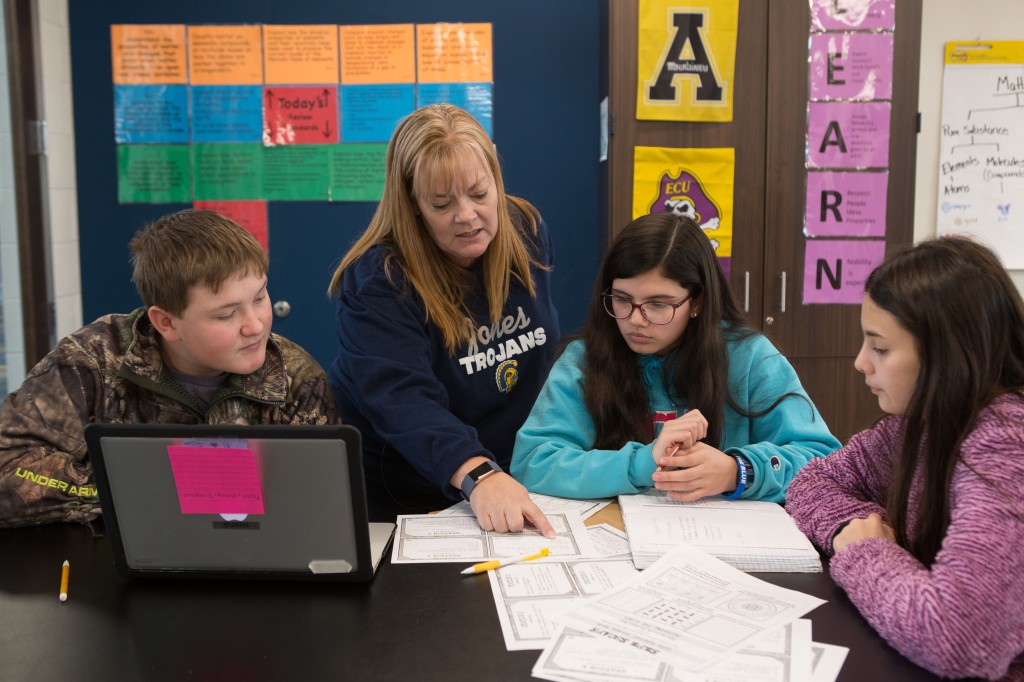
Conclusion
Anna Fair and other juniors, pictured below, who indicated they need more time to use common areas for project-based learning, are seated just outside of their social studies classroom, prepping for an upcoming assessment. When asked how they feel about their new school, the students lament the loss of their old one, disparage the glass walls, and believe the new swanky building has brought on too many changes (e.g., new principals, new rules). Students believe new social sanctions restricting use of main common areas are creating more isolation than community among the student body. In actuality, at the writing of this review, JSHS students are not permitted to gather informally in the main common areas during lunch because of their own undoing. Irresponsible use of the space such as leaving plates of food behind, spilling drinks, and other lackadaisical acts of adolescent dereliction led to loss of the privilege. Equally, administration seeks to protect protect the learning environment of the other classes (e.g., (Business, Entrepreneurship, Nursing / Health Sciences, Foods) being held right along the corridor of front lobby collaborative space.
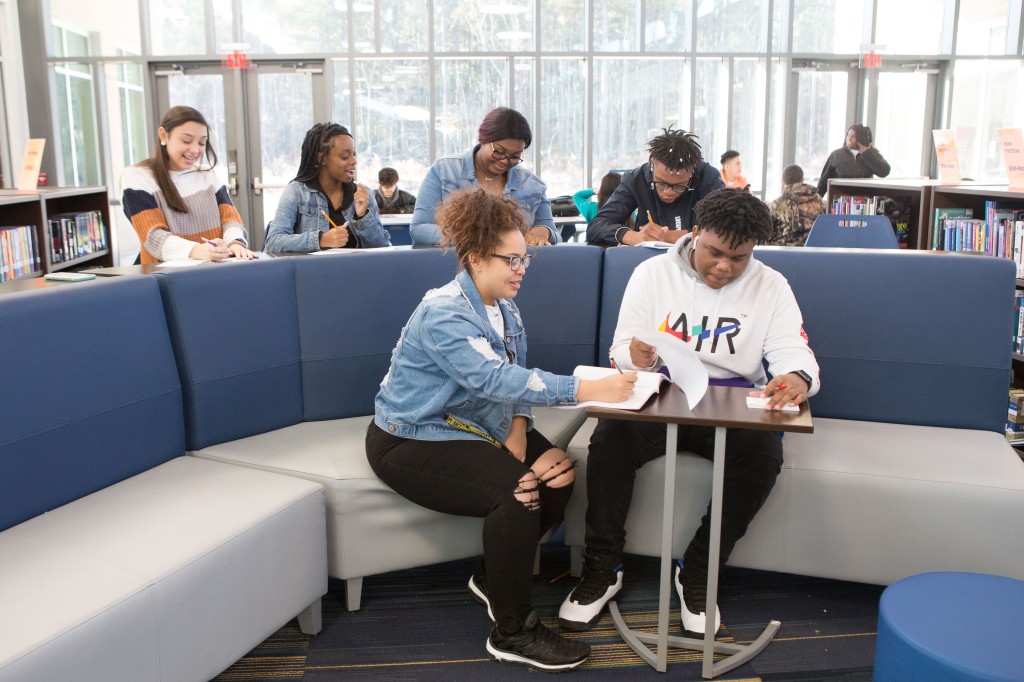
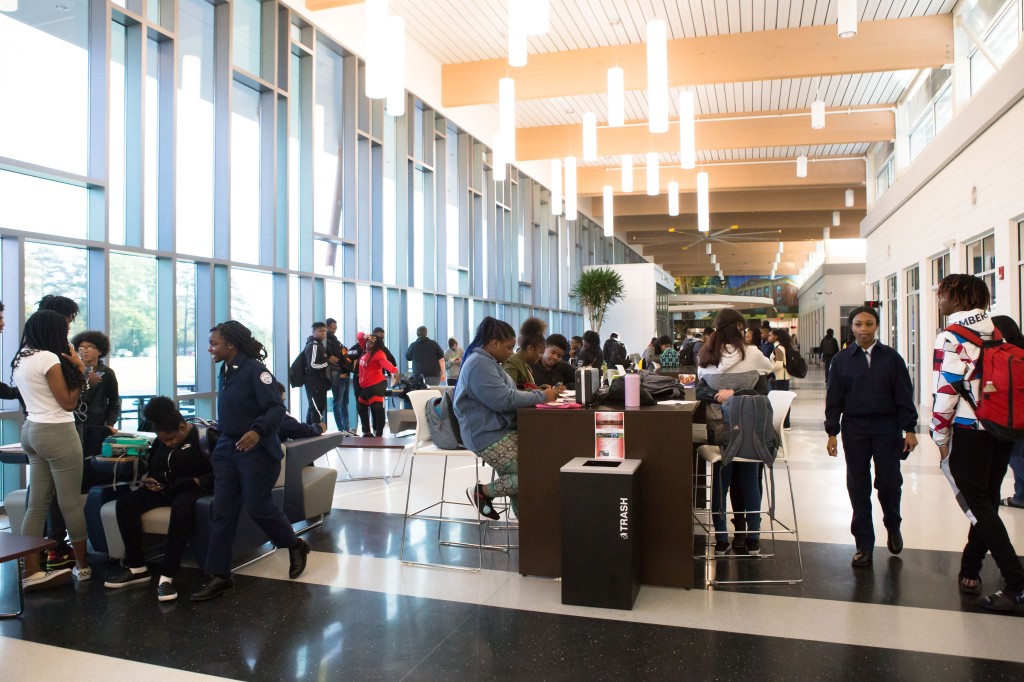
Now reserved only for dual-enrollment students taking online courses through Lenoir Community College, the main common area is occupied each class period by about 20- 25 students or so.
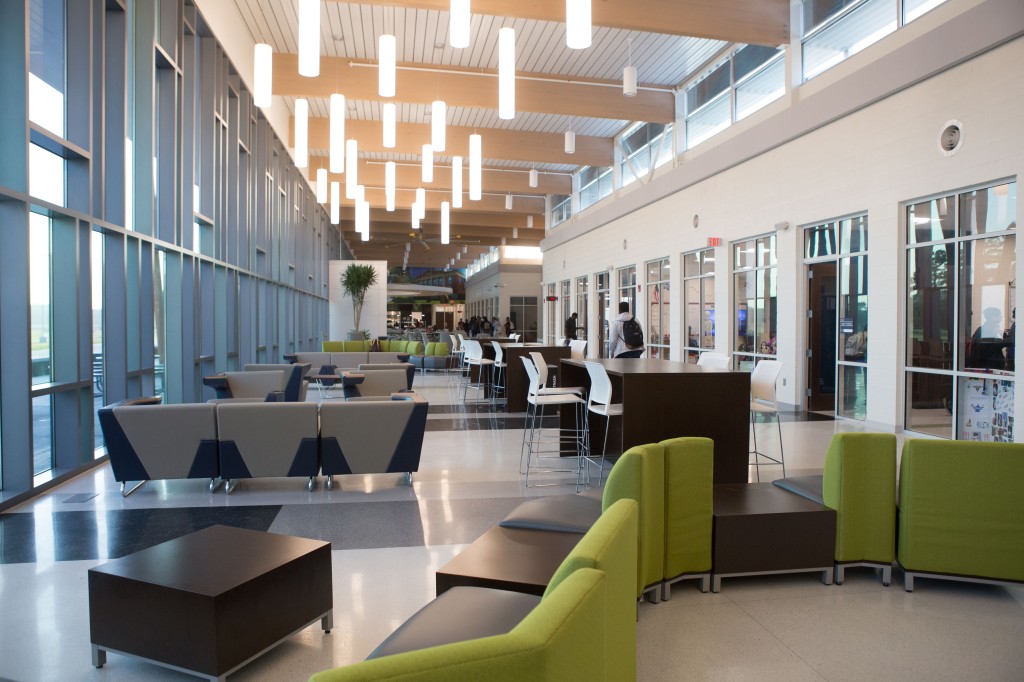
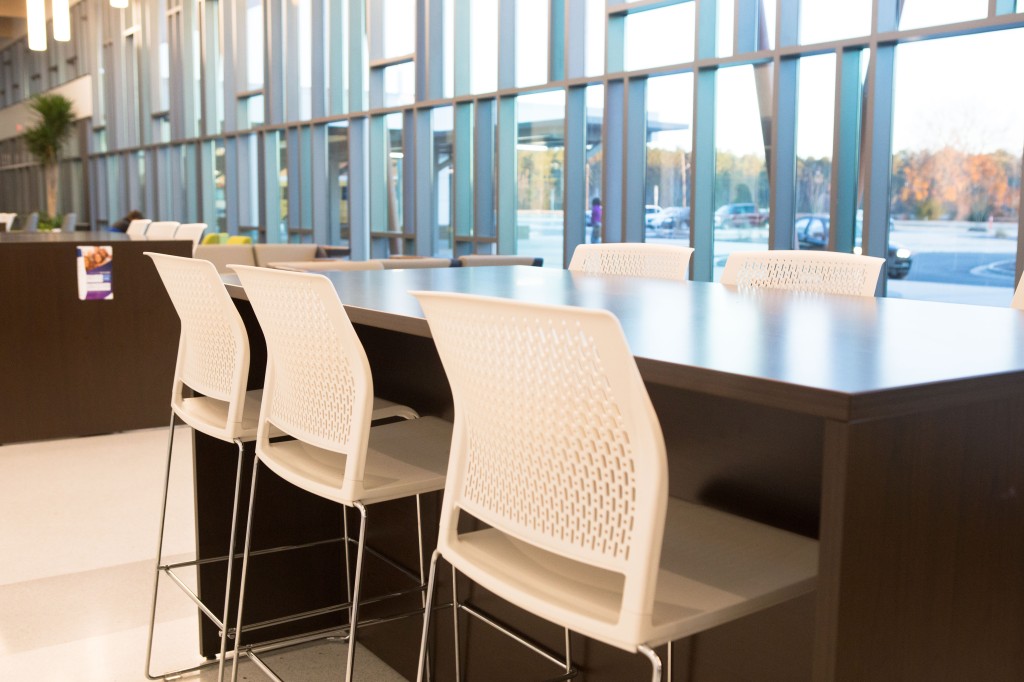

Establishing conspicuous and observable academic expectations and social behaviors for effective use of flexible learning environments may sound simple, but this critical step will form the new foundation for school community and school culture, and new principal Tod Morgan says he is committed to both. Morgan recognizes he is the only principal on the planet at this moment with a unique opportunity to
- maximize teaching, learning, and playing in this amazing, new, and currently one-of-a-kind educational facility;
- create inclusiveness and foster equity in high school’s new grades 7-12 configuration; and
- balance the dichotomy of maintaining Trojan traditions while simultaneously embracing innovation and change.
With a carpe-diem-type attitude, Morgan’s every action seems to cry, “Let the games begin!”

And rightly so! For once a Trojan, always a Trojan, and Tod Morgan is a Trojan. No stranger to JSHS, he stomped the original grounds just a few feet away as the school’s assistant principal just a few years ago. Morgan knows the culture and the community, and if community members think they know Morgan mainly as an athletic coach, they would not be wrong. Currently serving as the County Athletic Director, Morgan believes it is his coaching experience that makes him well-suited to lead the #TrojanNation to the next level of success and innovation.
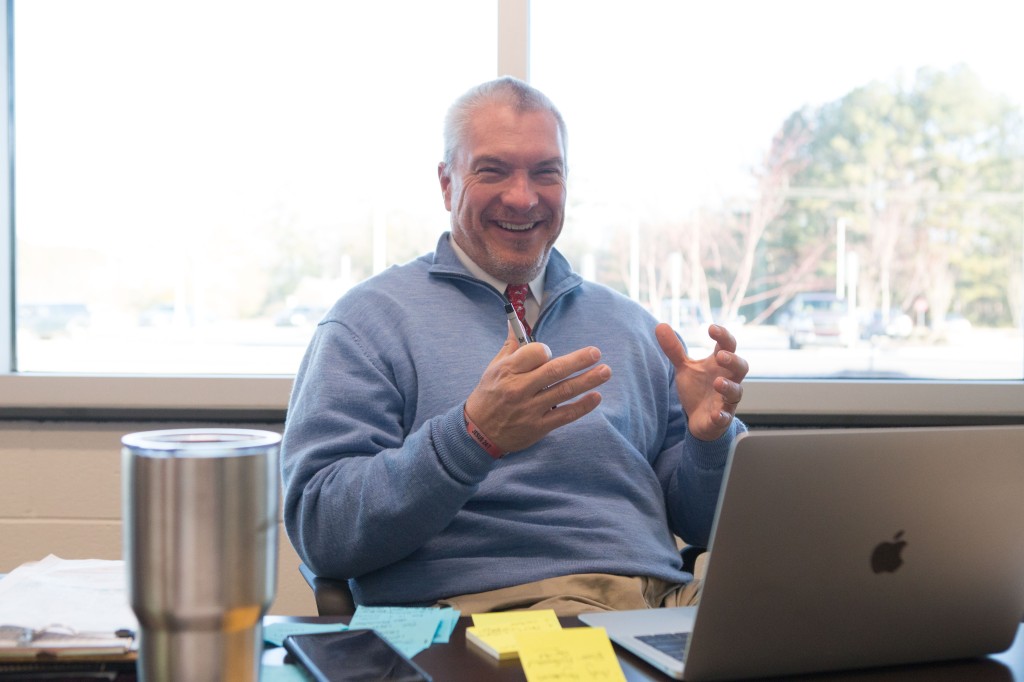
“Leadership is leadership. Percentages are percentages–whether they are field goals or test scores. Review the tape. Make adjustments, Practice. Grow. Score.”
Tod Morgan
Applying 25 years of coaching to this new academic opportunity fuels Morgan’s efficacy to fulfill his vision of fostering the same kind of inclusivity witnessed in team sports in the culture of Jones Senior. Driven by principles of servant leadership, Morgan describes himself as reflective practitioner and strategic planner. Learning from his own various professional experiences, Morgan believes in trusting the process. What is the process? For Morgan, it is building a culture where “preparation meets pride.” Morgan believes setting high expectations and empowering leadership in others are pillars that foster equity, engagement, and achievement. Morgan seeks to model expectations for excellence through his own actions, subconsciously embedding service-driven values into the very fiber of Trojan DNA.
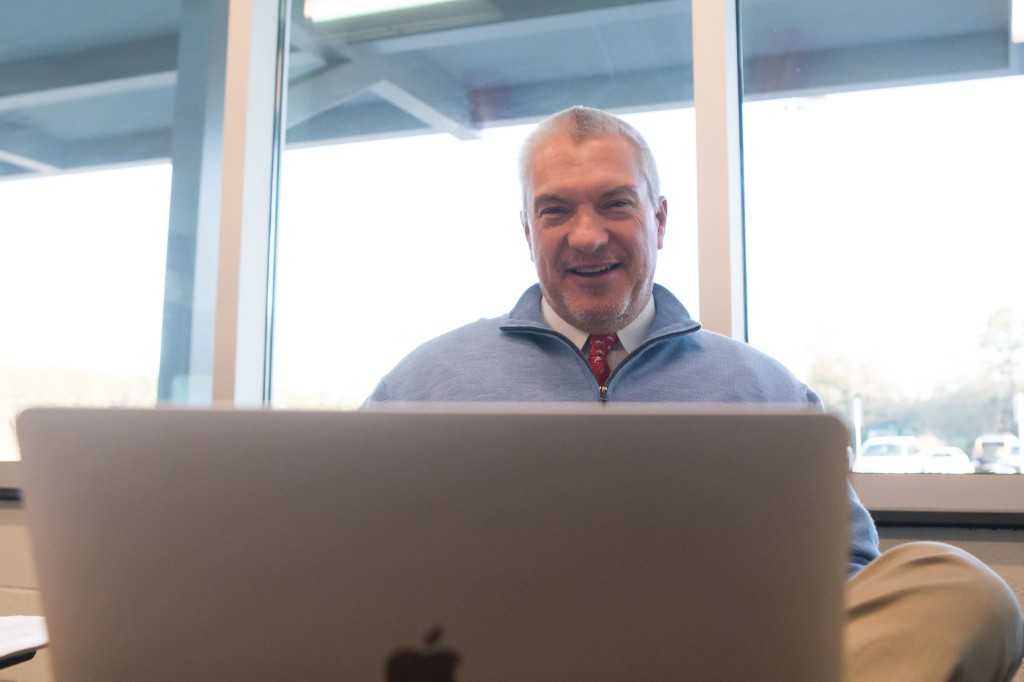
There is no doubting Morgan has the attitude coupled with the right breeding ground to nourish and grow every facet of his visions for equity, sportsmanlike conduct, and strong commitment. Morgan is looking for the kind of commitments from others that propel athletes into champions and students into scholars. Morgan says he believes in empowering teachers to stretch learning limits so students can score big!
Although almost every Trojan (staff and students) admits he or she still has much to learn about maximizing the countless options available via their state-of-the-art high school, all exhibit an eager willingness to learn, take risks, and support each other in the process. With deliberate foci on exploiting their flexible learning environment to meet instructional intentions and address students’ academic and social needs, the Trojan community and its shareholders should all score big, yielding significant returns on their investments in the state’s best school.
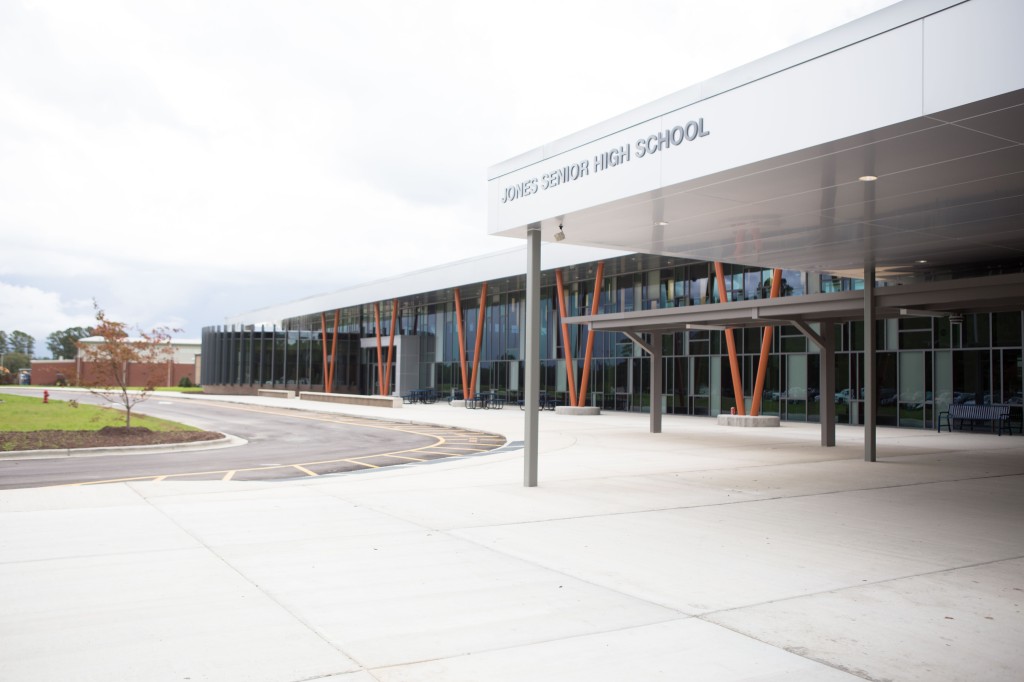
Learn more about Jones Senior High School
All images and content ©DutchessMaye/eduConsultingFirm2019